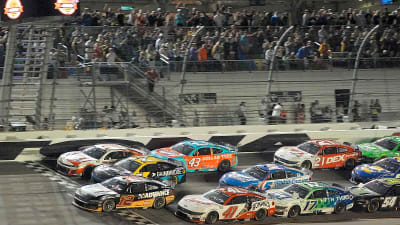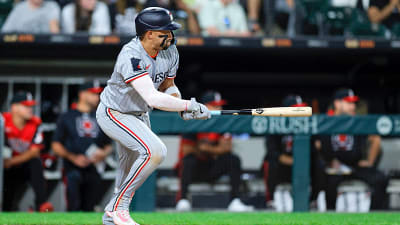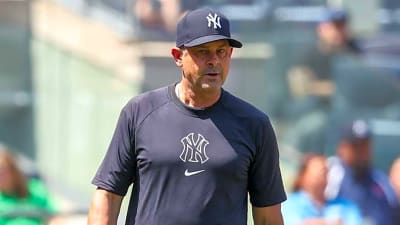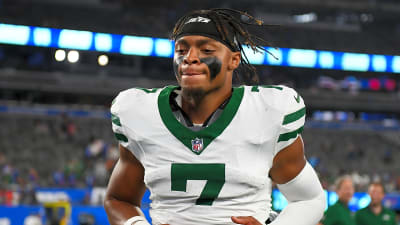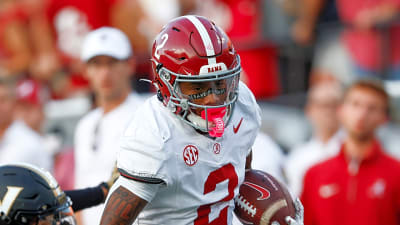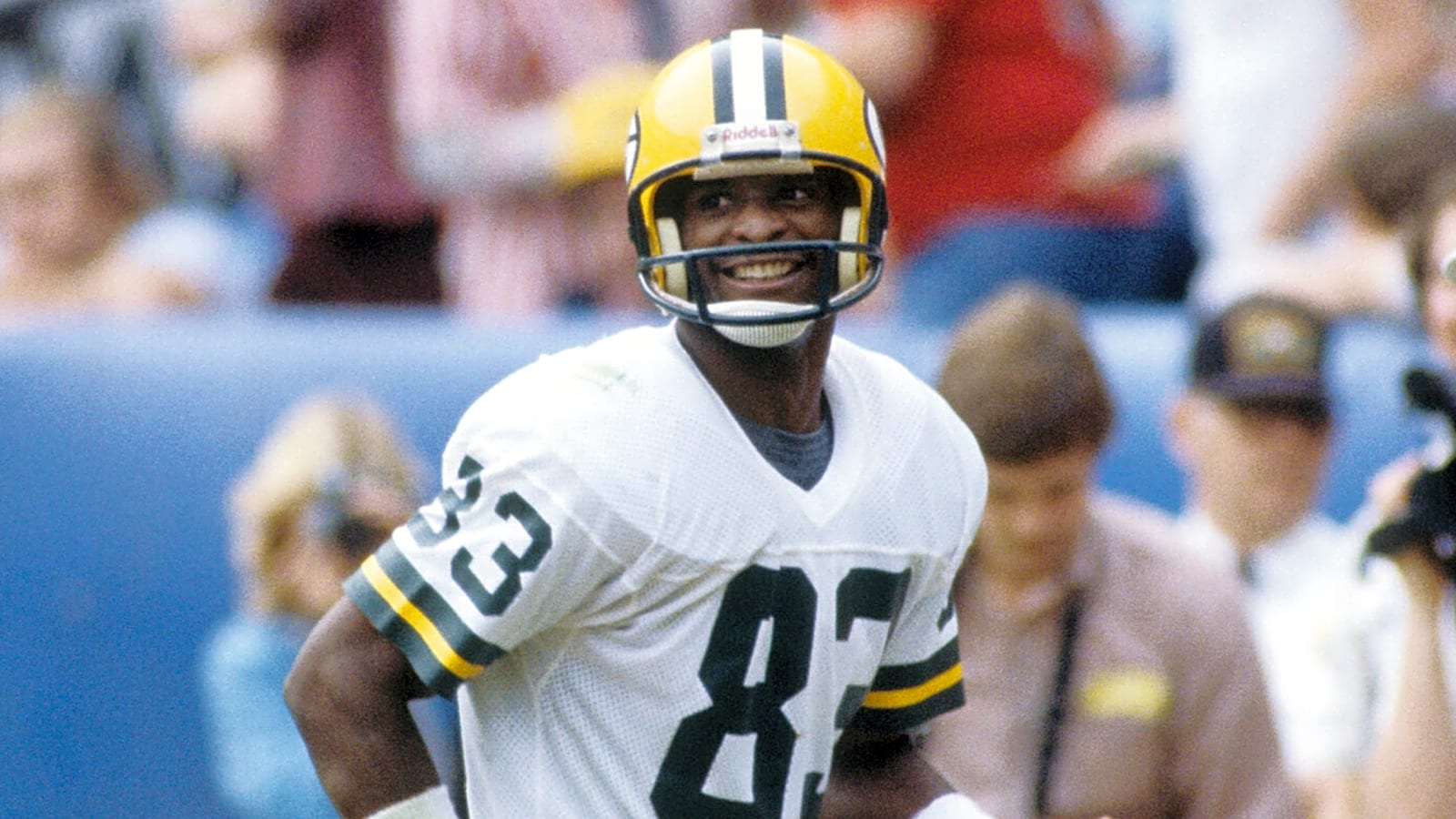
The Green Bay Packers made one of the biggest trades in team history in September of 1981 when they acquired All-Pro wide receiver John Jefferson from the San Diego Chargers. By adding Jefferson, the Packers suddenly had two of the best wideouts in the league with Jefferson and James Lofton. “J.J.” also brought energy and optimism to the team, but was the price the Packers paid for Jefferson worth it? Today we are remembering the impact of the Packers trade for John Jefferson, both the positive and negative.
Remembering the Impact of the Packers Trade for John Jefferson: The Deal
The situation that led to the trade of Jefferson started during the 1981 offseason. Jefferson staged a holdout from the Chargers where he spent his first three NFL seasons. The former Arizona State star earned Pro Bowl honors and gained more than 1,000 yards receiving every year he was with the Chargers. He also had more than 10 receiving touchdowns in each of the first three seasons as part of San Diego’s “Air Coryell” offense. He also led the NFL in receiving yards the previous season with 1,340 and led the league with 13 touchdown catches.
Jefferson was dynamic, bold and talented. But he and the Chargers had a contract dispute and Jefferson refused to report to training camp in 1981.
Jefferson missed the first three games of the 1981 season while his agent tried to reach a new agreement with the Chargers. Then, he was traded to the Packers for a big haul. The Packers sent a first-round pick, two second rounders and wide receiver Aundra Thompson back to San Diego for Jefferson.
The Packers adjusted Jefferson’s contract to make sure he was not getting paid more than Lofton who was the Packers best player.
For his part, Jefferson said all the right things at his introductory press conference, which was held on Wednesday, a few days before his debut in Green and Gold.
“No longer can anyone come in here and step over Green Bay,” he told reporters. “It’s the same situation we had in San Diego where Oakland considered us a truck stop on the way to the playoffs. I’m just happy to be here and I’m getting settled in trying to pick up the system.”
The Packers Situation
The Packers were 1-2 when Jefferson joined the team and were coming off a 5-10-1 campaign in 1980. At that point, the board of directors seemed to be losing confidence in head coach Bart Starr, who was starting his seventh season with the team. The Packers had only one winning year under Starr to that point. That came in 1978, when they started 6-1 but finished 8-7-1 after slumping badly in the second half of the season.
The Packers hadn’t been in the playoffs for nearly a decade and had just one winning season since. The league was beginning to overlook the Packers, but that changed with the arrival of Jefferson.
When Jefferson arrived in Green Bay, he provided the Packers with a burst of energy and positivity. At pre-game introductions, he and Lofton jumped and high-fived each other in the end zone. It became a popular among the players after that and added a celebratory mood to Packers games.
The national media also started to take notice. Broadcaster and former Raiders coach John Madden was excited by the Packers addition of Jefferson. “It’s almost too good to be true to have the two best wide receivers on the same team,” Madden said. “If I had to pick two wide receivers to build my offense around, Lofton and Jefferson would be the guys. It’s amazing to think that the Packers have them both.
Remembering the Impact of the Packers Trade for John Jefferson: An Exciting Debut, Green Bay Debut
Jefferson’s Packers debut came against the 2-1 Vikings at Milwaukee County Stadium. The good news was, J.J. caught seven passes for 121 yards in the game. He would never top that yardage total in a regular season game in the four seasons he spent in Green Bay.
Unfortunately, the Packers blew a 10-0 lead and fell to the Vikings 30-13. Lofton caught eight passes for 101 yards and a touchdown. But the Packers quarterbacks were sacked eight times, and the Pack committed nine penalties in the game.
A Mixed Legacy
The Packers improved after Jefferson’s arrival. They never had a losing season during his four years with the team. The Pack finished 8-8 in 1981, 5-3-1 in the strike-shortened 1982 season, and then 8-8 again in 1983 and 1984. They made their only playoff appearance of the 1980s in 1982 with Jefferson catching six passes for 148 yards and two touchdowns in the Packers 41-16 win over the St. Louis Cardinals.
Jefferson made the Pro Bowl after the 1982 season. In 1983, he caught 57 passes for 830 yards and seven touchdowns playing alongside Lofton and tight end Paul Coffman.
But Jefferson’s production dropped significantly in 1984. He caught just 26 passes for 339 yards. After that season, he was let go and finished his career with a brief stint in Cleveland.
For all the excitement and energy Jefferson created his tenure in Green Bay never quite lived up to expectations.
Bob Schnelker, who served as the Packers offensive coordinator during the final three seasons Jefferson played in Green Bay, had some theories. “You didn’t know how to get to him. He’d make sensational catches, great plays, but you never knew what he was thinking,” he told Cliff Christl of Packers.com. Schnelker also believed Jefferson may not have liked being considered the number two option behind Lofton. “He was in the backseat, and I don’t think he liked it,” he said.
Regardless of the reason, Jefferson had his moments as a Packer but never reached the heights he had in San Diego. While he was here, he added excitement and style to the Packers. But the team and Jefferson fell short of expectations.
More must-reads:
- Mets manager confirms veteran pitcher done for the season due to 'pretty significant' injury
- Eagles waive offseason trade pickup
- The 'Season TD pass leaders by NFL team' quiz
Breaking News
Trending News
Customize Your Newsletter
 +
+
Get the latest news and rumors, customized to your favorite sports and teams. Emailed daily. Always free!
